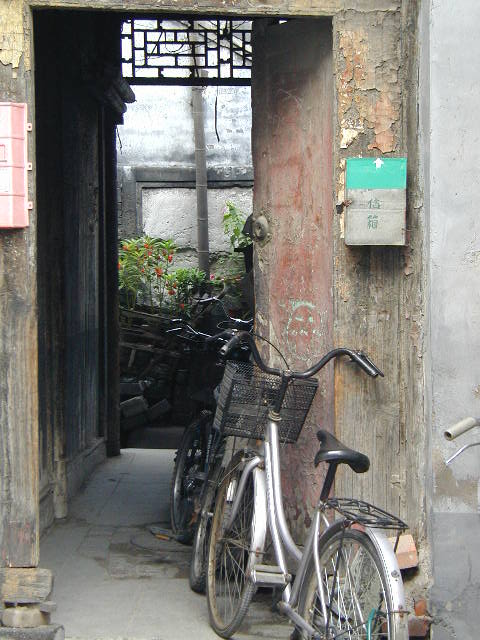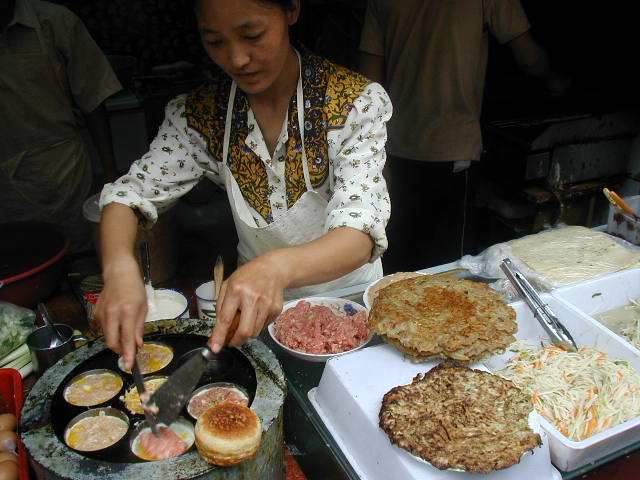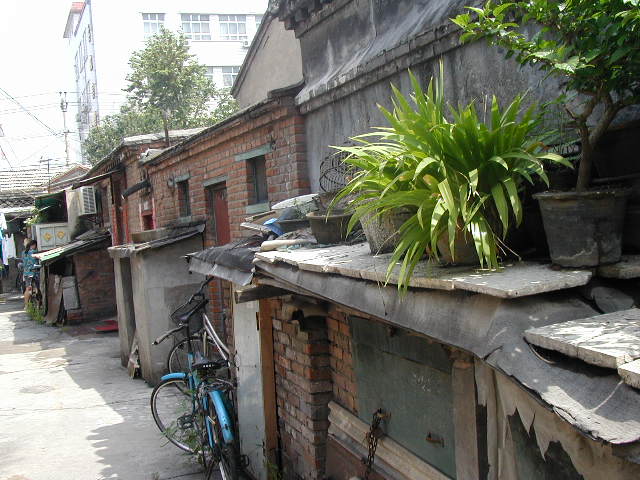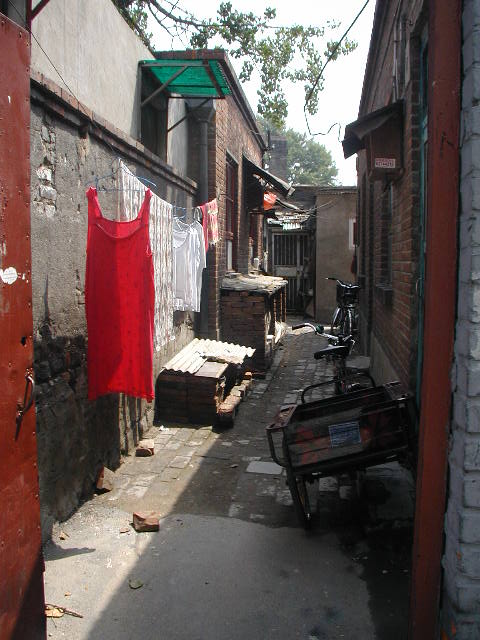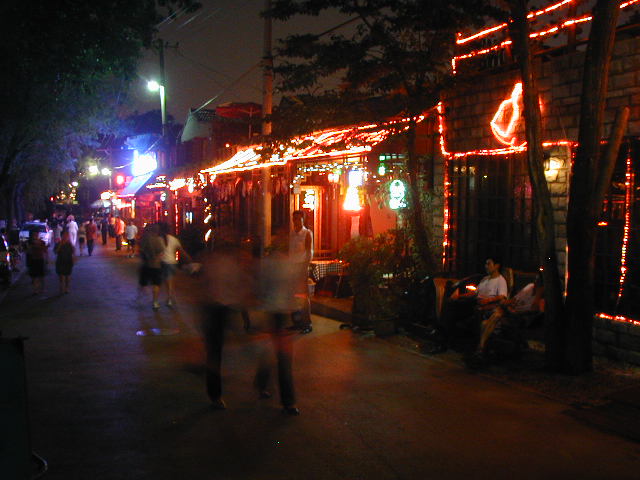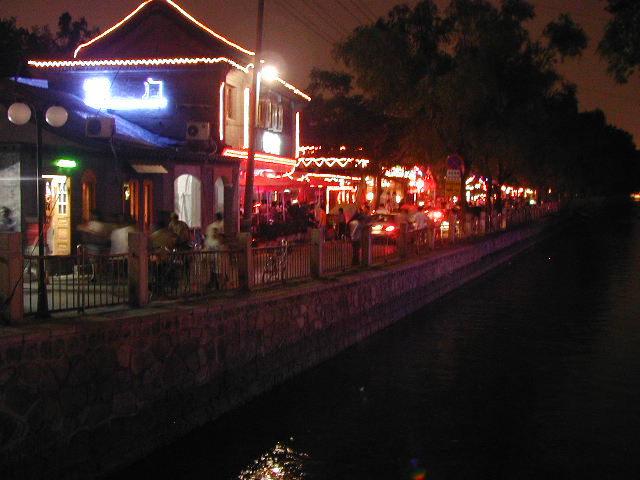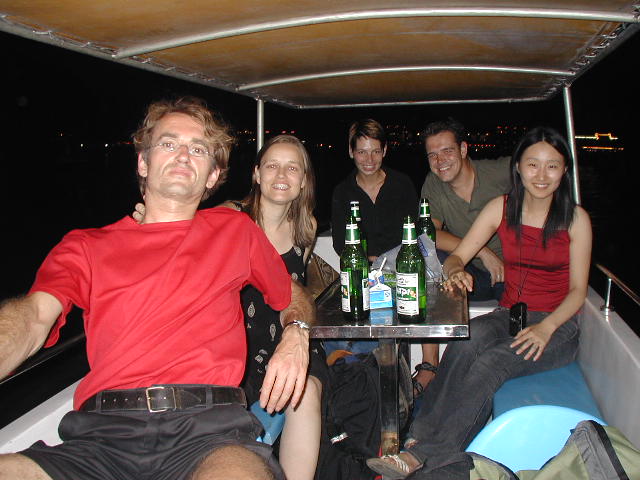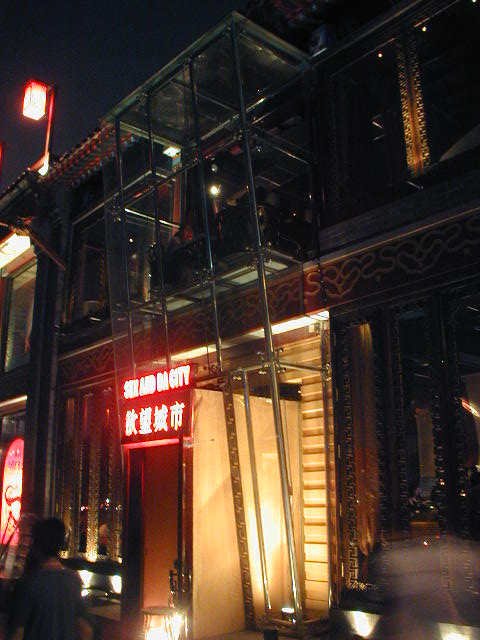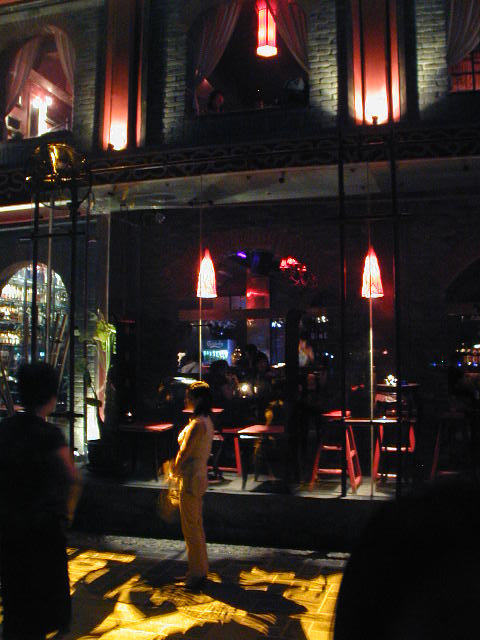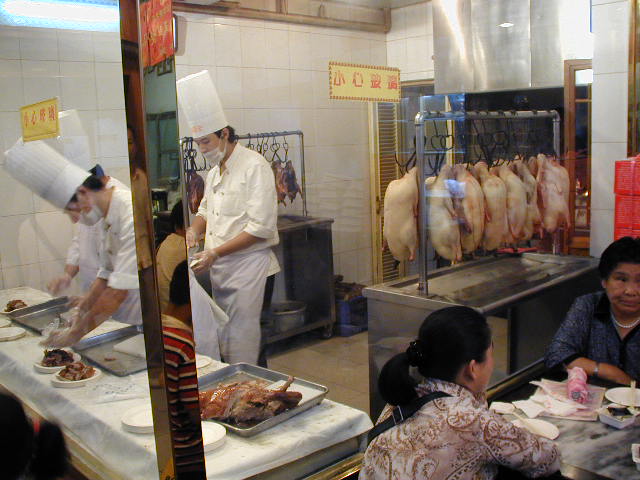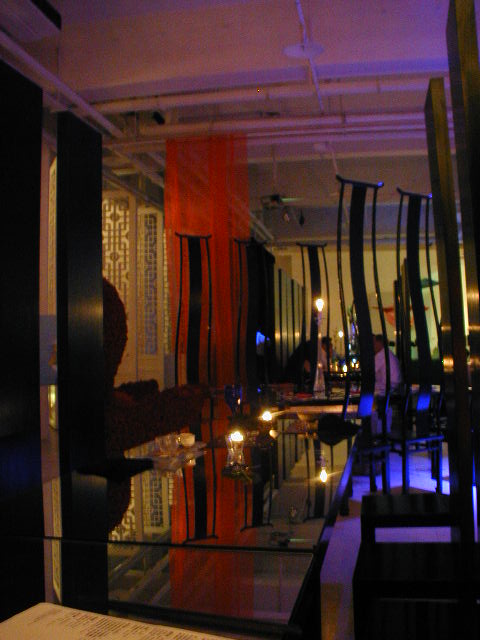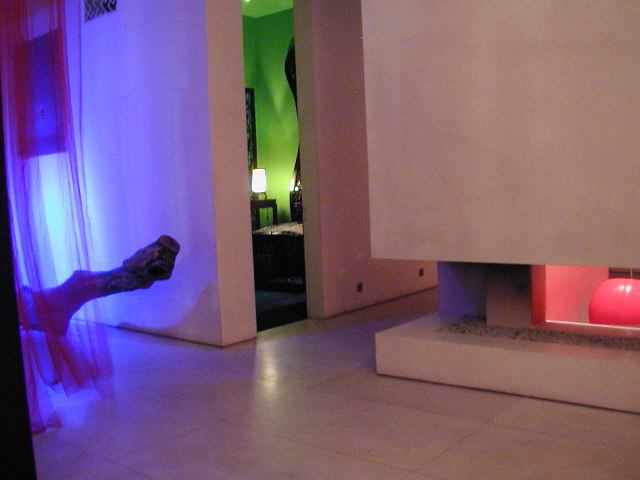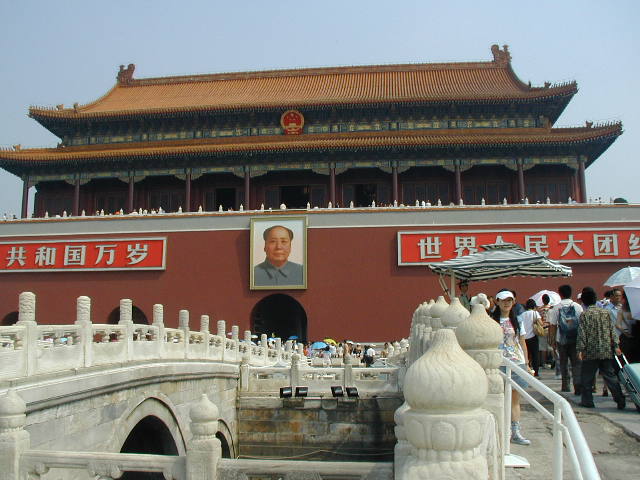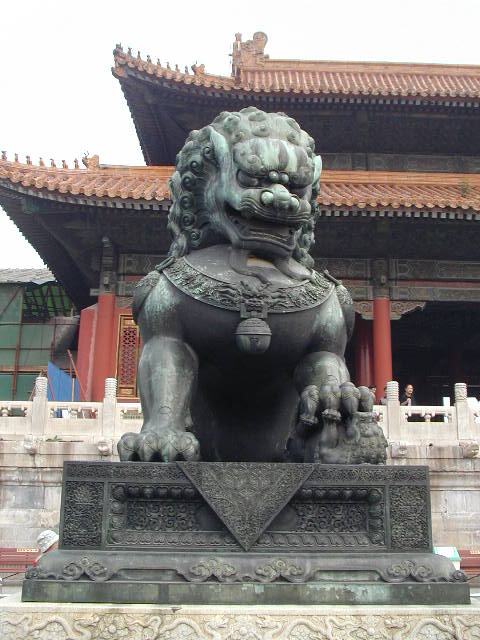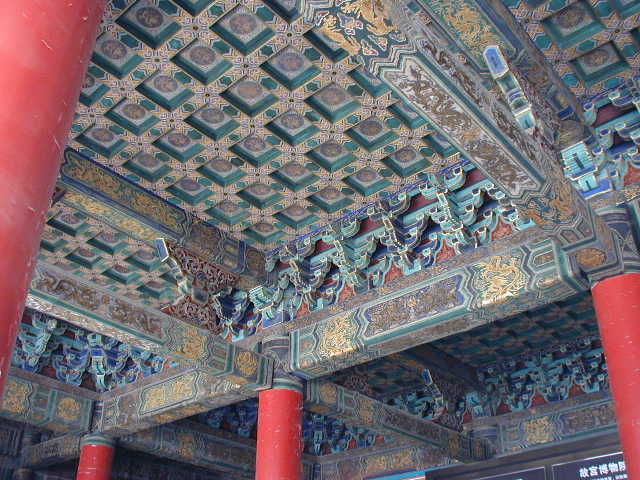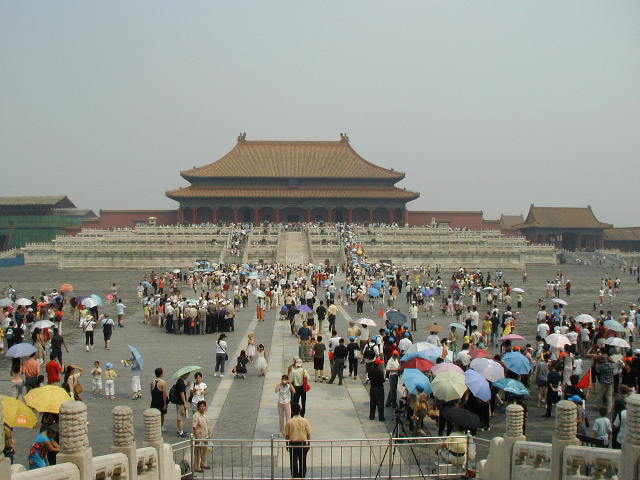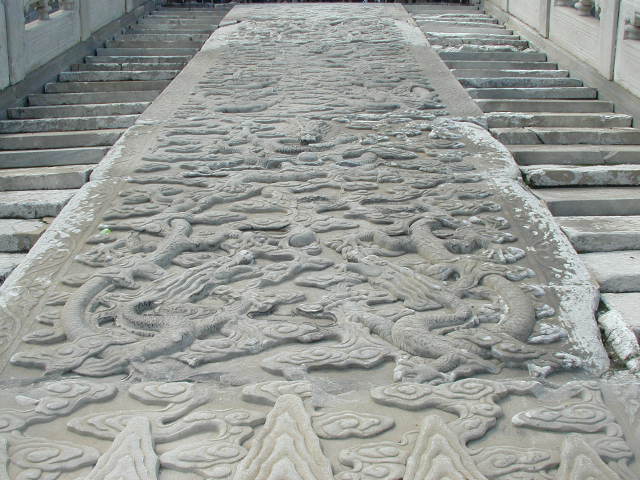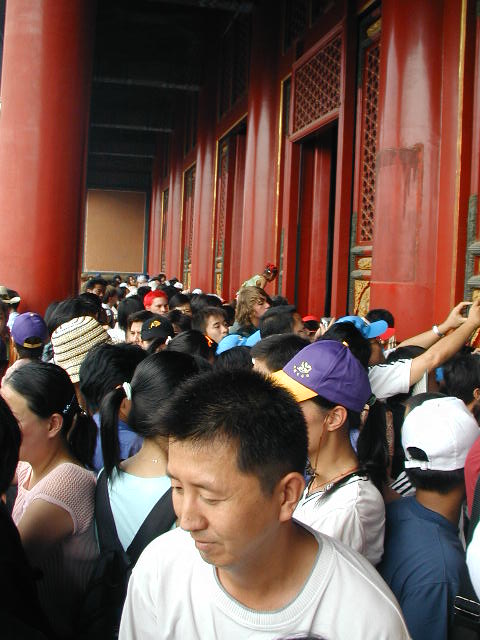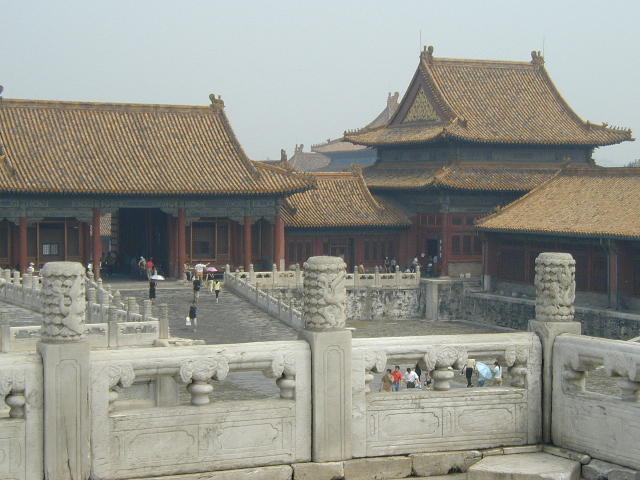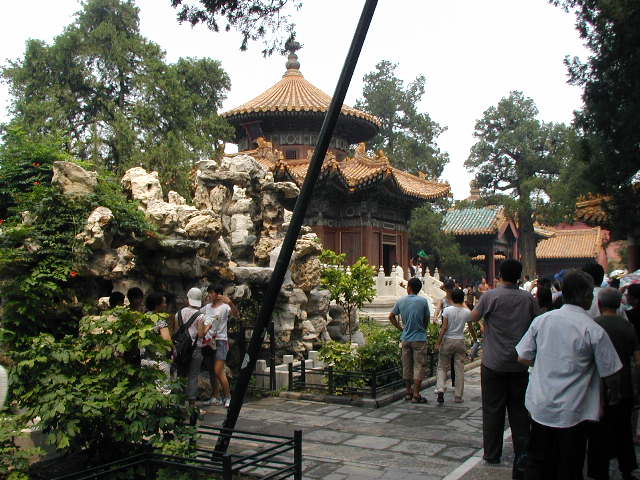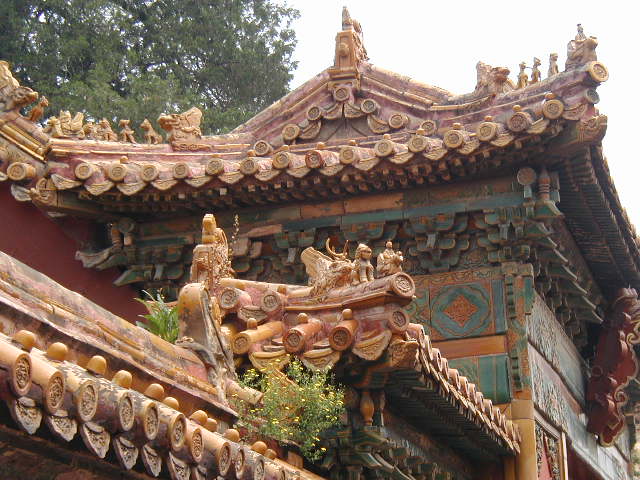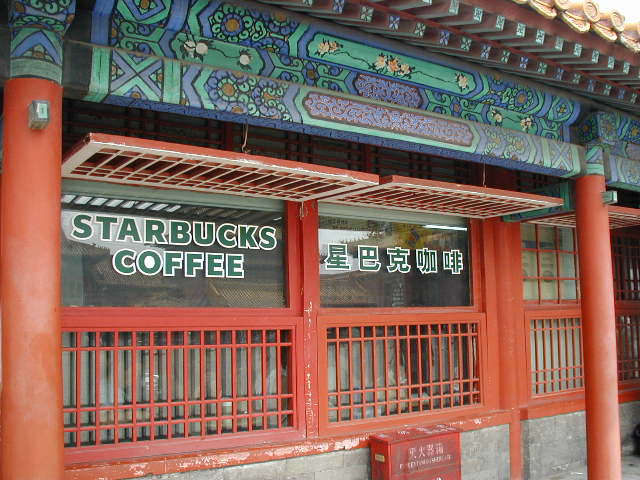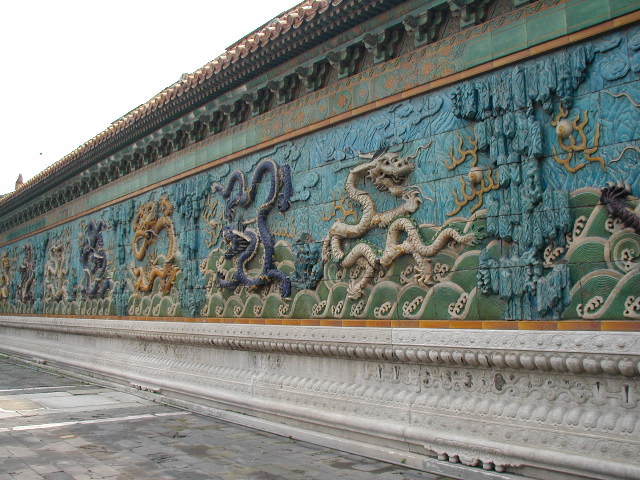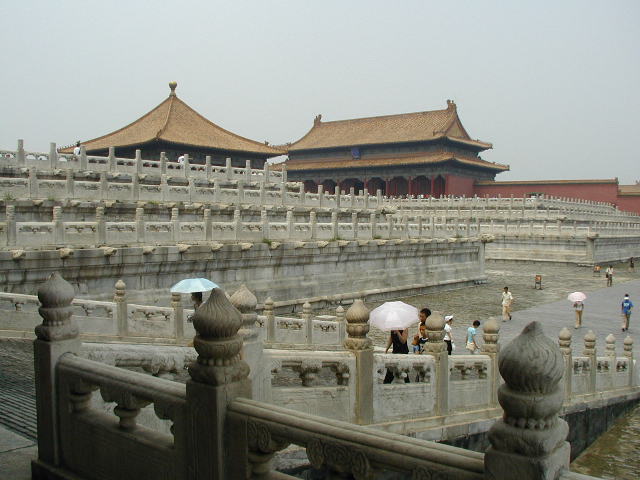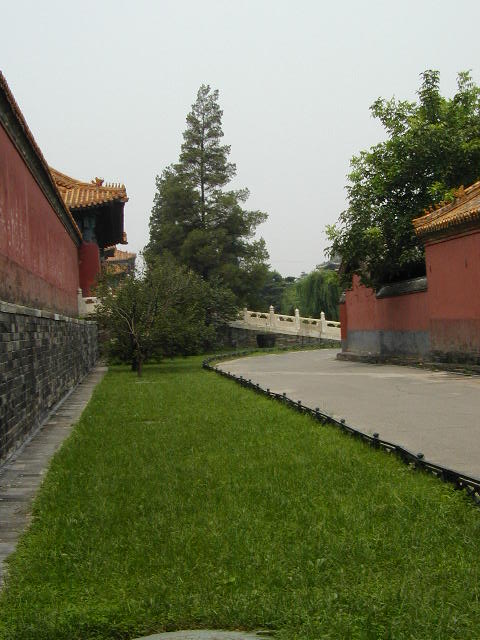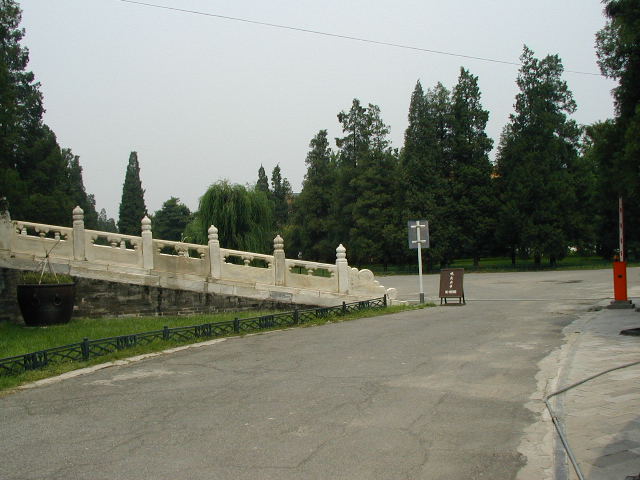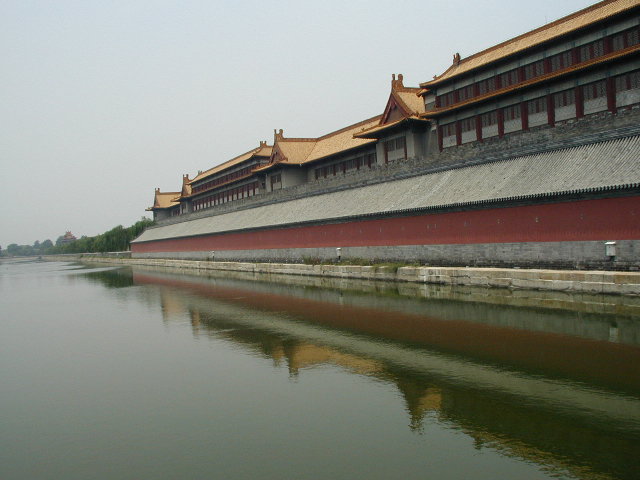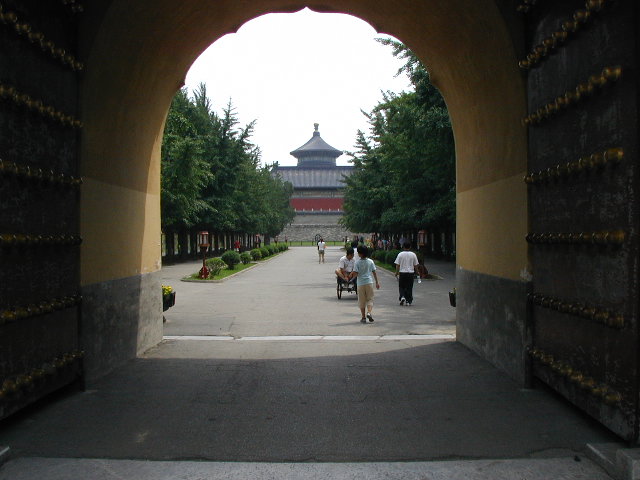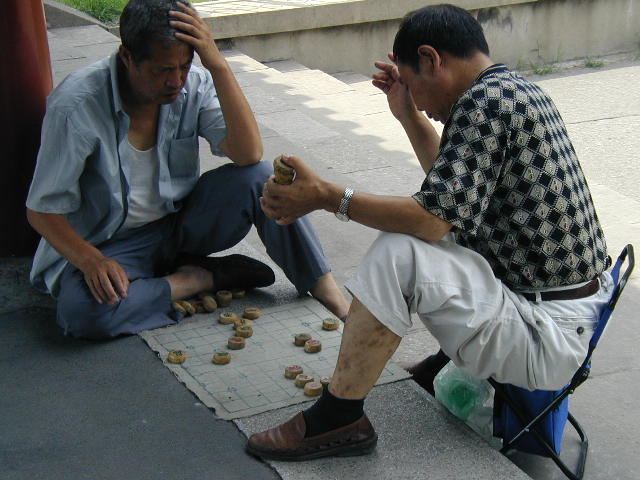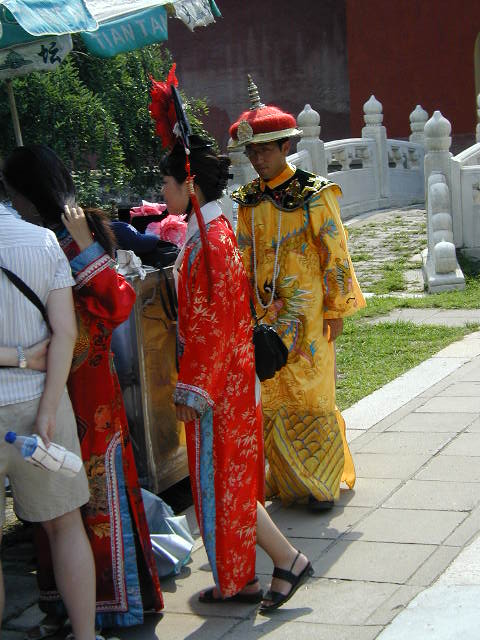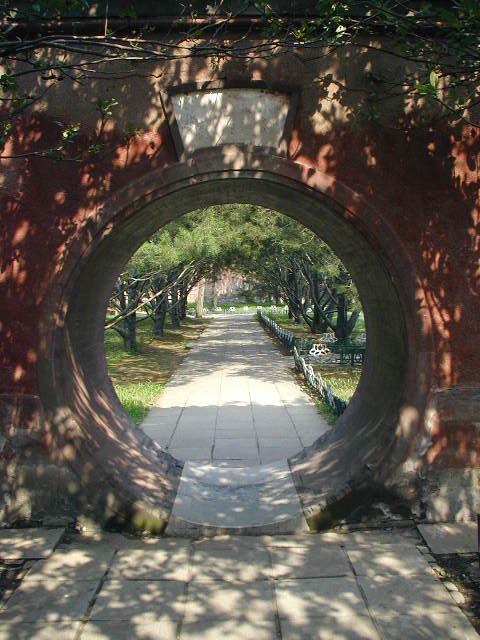Beijing, China
July 6, 2004 - July 12, 2004
&
July 19, 2004 - July 30, 2004
I spent 3 weeks here, but the first week I spent resting my fractured patella. This is an enormous city, much bigger than New York. It stretches 45 km in all directions from its center, the Forbidden City. I didn't get to see much of it, but what I saw I got to know really well. I stayed in the Chaoyang district near Sanlitun Lu. China is rapidly changing, so Sanlitun, the former ex pat bar street, closed just after I left Beijing. But while it was there, it was a cool area to stay. The hostel I stayed at was a good one affiliated to the Zhaolong 5 star hotel just in front of us, so the conditions were very clean and they had air conditioning, though they lacked a certain friendliness..
A lot of my time here was spent exploring dive restaurants and getting stuffed on good Chinese food for $1, and hanging out with friends. I met many people in the hostel that I went out with for food or drinks, and was able to meet up with Tore and Sigrid from the train ride to try such cuisine delicacies as fried scorpion. But a week into my stay, just as I was starting to walk on my bad knee, I used Hospitality Club to meet, Sonsuk, at The Hidden Tree in Sanlitun. Sonsuk brought another local friend, Yang Jia, and we enjoyed some western food amongst all the other ex pats. We go to talking about travel inevitably, and though Sonsuk was working with a Korean firm, Yang Jia had just started summer vacation from university, and got really excited to see some of China, which she's never seen before. This got me excited as well, and was just the excuse I needed to get out of my "sickbed" and start my exploring. So the very next day we made plans to travel together around the North for a week. So my first week and a half in Beijing was pretty uneventful, but after some traveling around China, we came back and spent another week and a half in Beijing.
The second time around I was able to see a lot more. I still limited my site-seeing, and explored the Hutong's and local neighborhoods more, but I did see the pre-requisite Forbidden City, and Tiantan Gongyuan. My opinion of the Forbidden City is surprisingly low. I was expecting an amazing secret mysterious place, but it was simply a 90% closed tourist trap. Thousands of tourists were packed into only the narrow passage from the South Gate to the North Gate. You couldn't wander around where you pleased (and believe me, I tried) and everything on the tourist route seemed exploited beyond recognition. I think the fact that there is a Starbucks in the middle of the city says it all. However, that said, by the 2008 Olympics, Beijing, and China, will be completely different and in their best light. (some travelers think Beijing will be ruined for the Olympics, pointing out that some of the best things about Beijing are on its underbelly. Places like the Hutong's are being wiped out and paved over as we speak, and the truly Chinese neighborhoods are being "Revitalized" into high-rise apartment blocks. I agree that this is some of the best Beijing has to offer, and replacing it all with Nike Stores and Starbucks will ruin a defining aspect of their culture, but at the same time, I found Beijing to be an embarrassment as a capitol city. I know China is still developing, but Beijing has all the power it needs to act as the model developed city, and instead it seems like the model for a bureaucratic corrupt government capitol that couldn't keep the city clean or maintained for its citizens.)
The good times in Beijing were plenty though. The Hou Hai area was just started last year, and is a very cool place to spend evenings, as it is not yet discovered by Lonely Planet readers. The Hutong is also always worth a good days stroll. Overall I would recommend this city for a short visit to the major important sites (if only because you're in China), and to spend the remainder of your time exploring Hutong's and the under exploited neighborhoods like Hou Hai. Then, as with all of China, get out of the city.
Red Square restaurant and hostel is in a traditional Siheyuan
courtyard

Downtown they are getting ready for the 2008 Olympics

Riding in a Sanlun Motuoche (a motor-tricycle)
Did it once. Never again.
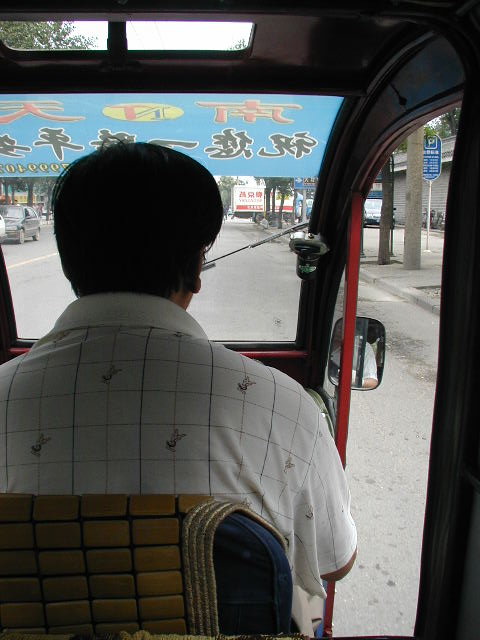
Hutong
Hutong directly means "narrow alleyways", but since you can only find
Hutong in Beijing,
obviously it means something more. A quarter of Beijing's residents live
in the hutong,
which are lined with traditional Qing-dynasty homes.
Hou Hai
This is a big lake which was developed into a bar and restaurant Mecca last
year.
Since then tiny little bars have been opened by entrepreneurs all the way around
the lake. You can rent a variety of traditional Chinese boats for a few
dollars per hour
and have picnics, or parties into the night.
The lake is only a meter deep. These folks are bathing in it.
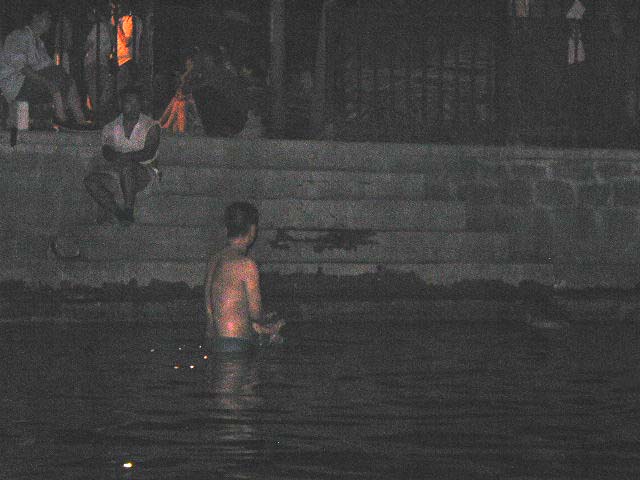
Our happy group after scoring free beers from another boat
(Frank, Miriam, their 2 friends, and Yang Jia)
Most of the Hou Hai bars are little places that got built overnight by the
owner and his friend, but up towards the entrance the bars are swank!
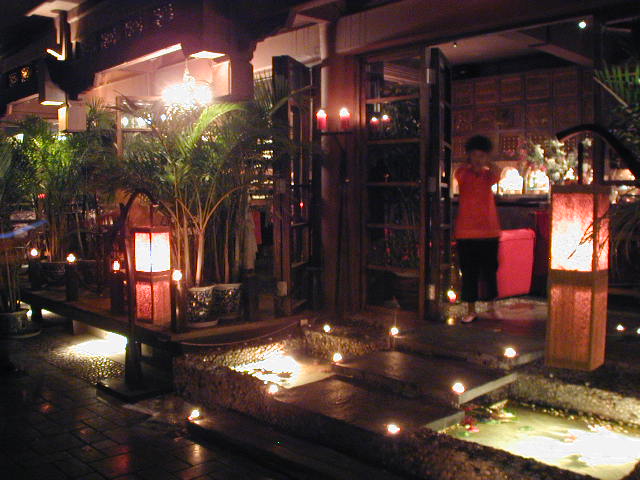
One thing about Beijing is that there are no shortage of dragonflies in the
day, and bats at night!
I love Chinese ice cream. You've never seen so many choices!!
But this one was kinda hard...
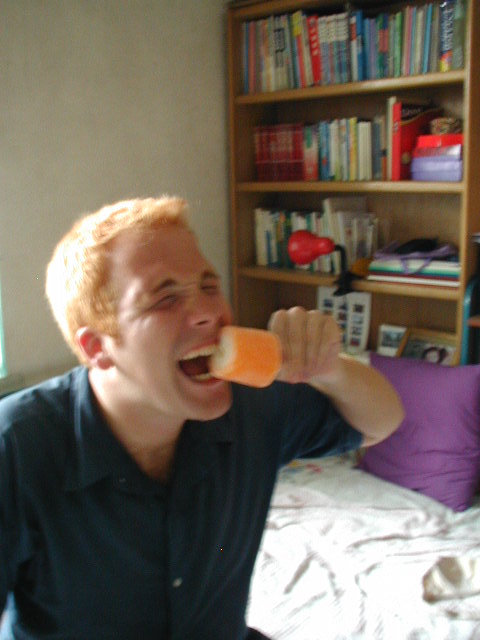
The oldest Beijing Duck restaurant in Beijing now uses a modern assembly-line
technique.
est. 1864
On my last night in Beijing Yang Jia and I went out to the Green Tea House
The Forbidden City
As I implied, this was a let down for me. I was expecting a magical walled
city where I could get lost in forgotten alleys, but instead, the whole east
and west sides were closed to tourists, and all you could do was walk with the
6000 other pushing Chinese tourists from the South Gate to the North Gate...
Somehow the magic is lost when you're being herded from on identical chapel
to the next.
The 2 lions you often see in front of Chinese entrances are obviously there
as symbolic protection.
But look closely, and you'll notice the one on the left holds a baby lion in
it's paw, while the one
on the right holds a sphere in it's paw. They are symbolic of male and
female counterparts which
feeds into the Yin and Yang of Chinese beliefs.
You never quite know when you're in the city. Each gate looks the
same and each time it looks like "this gate is the real entrance."
The stairs leading down from each gate are separated by an intricately carved
ramp that was only for
the emperor's use. He was the only one allowed to walk down the center
of the Forbidden City.
Yeah, real solitude here in the Forbidden City...
Most people seem to agree that the only part of the Forbidden City worth going
to is the empyreal
gardens at the North Gate. They are nice, but I'm not sure I'd pay the
entrance fee even for them.
The figures on the corners of each roof are demons meant to
discourage lightning strikes which caused many fires in the city
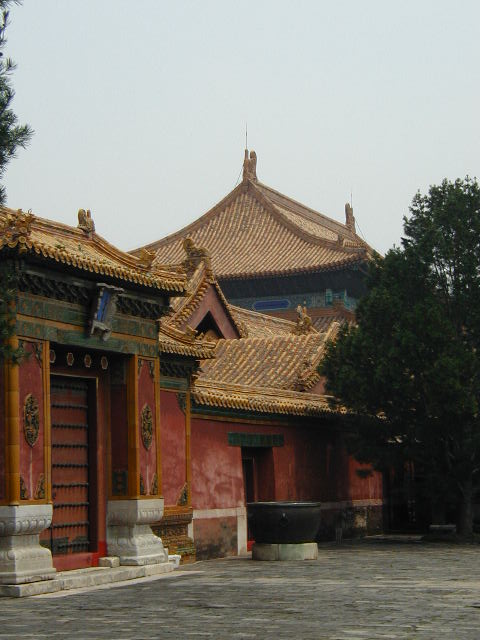
And can you believe this blasphemy?! Inside the Forbidden City!
No wonder the
Chinese call it the Palace Museum - they know nothing is forbidden about this
city!
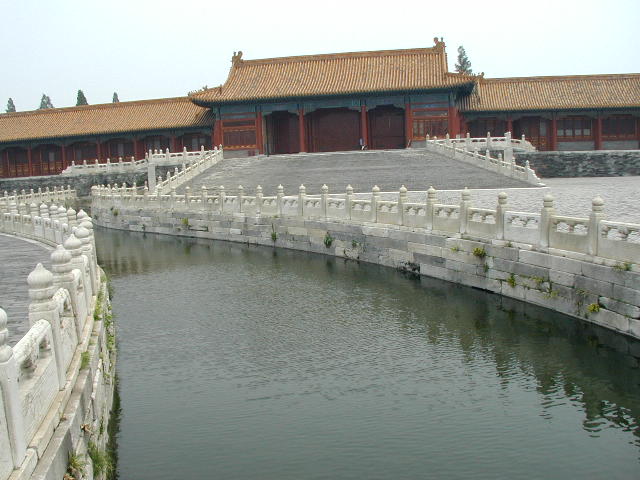
OK, so I sneaked around into the east side and though I was stopped pretty fast,
I got a quick
glimpse into the real Forbidden City. For the 5 minutes I was there, I
heard no noise, saw no people,
and felt a remarkable calm. The grass and trees were a nice touch too.
It must have been nice
before Communism...
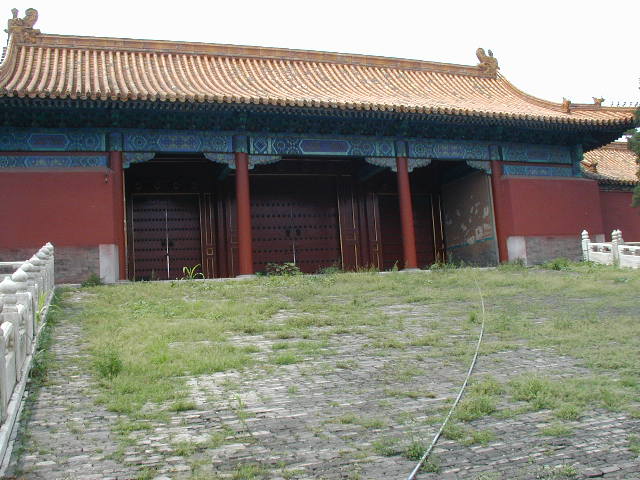
This was outside the actual city, but still within the protective walls, so
this really was a massive place for the times
Tiantan Gongyuan
Gongyuan means garden, and this was the empyreal garden that the emperor would
travel to to make offerings and participate in ceremonies. It was about
as exciting as
the Forbidden city, which is to say... not.
